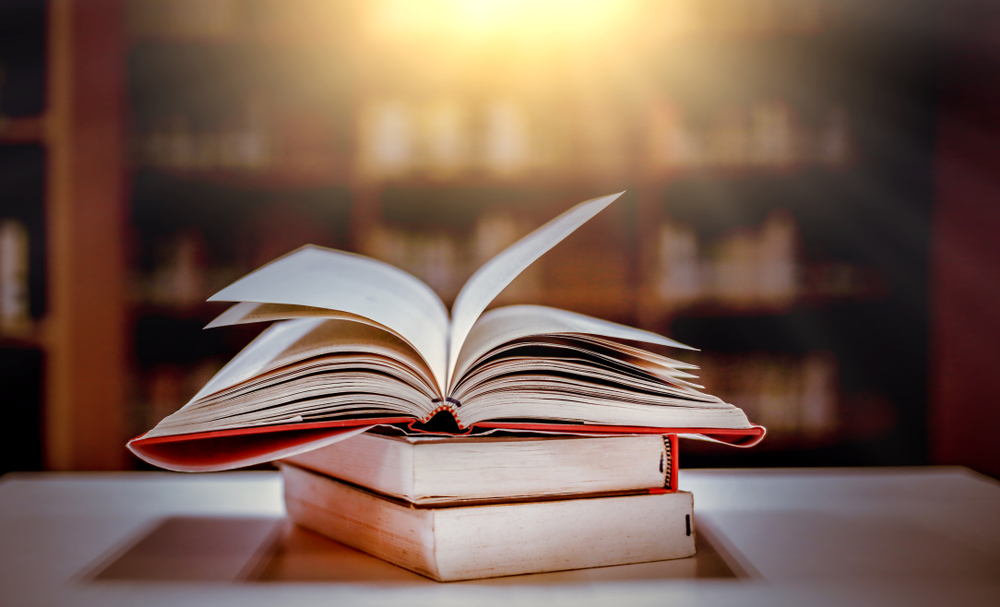These days, the world of contemporary American poetry is less one world than many. Never has so much poetry been published; rarely have there been more “camps” or “contingents” that have little to say to each other. This is not necessarily bad news. English-language poetry is a wide tent, and there is room for many different voices, styles, audiences, themes. But the reality is that the lack of a unifying vision, a shared sense of what poetry is and what it can do, has impoverished the art. In the absence of a cultural conviction about what role poetry plays in society, the lowest-common-denominator rule applies: poetry has become, for many, synonymous with (and reducible to) self-expression.
There is, however, a small resurgence of poets and critics willing to assert that poetry is more than self-expression, that it is a high and noble art modulated by discipline, technical skill, and deep attention to the world—that poetry is perhaps even a holy art that carries with it communal, social, political, and theological responsibilities. For decades, the champion of this view was Dana Gioia, former head of the National Endowment for the Arts and author of many books of poetry, as well as countless articles, reviews, and even libretti for various operas. In recent years, the poet, critic, and teacher James Matthew Wilson has emerged as a promising voice for this view of poetry as a high and holy art. Wilson’s triple calling has uniquely positioned him to shape and lead a community that may have a significant influence on English-language poetry across America.
“The Experience of an Order”
The publication earlier this year of Wilson’s fourth full-length poetry collection, bearing the lovely title Saint Thomas and the Forbidden Birds, prompted me to take a broader look at the poet’s oeuvre so far. Besides his four poetry collections, Wilson has written eight nonfiction books—six of literary criticism, one of philosophy, and one of theology—in which he brings his readers’ attention to sadly under-read poets like Thomas MacGreevy, Timothy Steele, and Denis Devlin.
Wilson is one of those poets whose creative work has developed in step with his critical eye, and these are the poets who tend to leave a lasting mark on a cultural landscape. As he shows in two monographs from Wiseblood Books, The Catholic Imagination in Modern American Poetry (now sadly out of print) and T.S. Eliot: Culture and Anarchy, Wilson’s criticism is that kind of affirmative force we encounter in figures like Eliot (clearly a model for Wilson), W.H. Auden, and Geoffrey Hill. The purpose of criticism for thinkers like these is not merely to elucidate the strengths and weaknesses of a particular poet or school of poetry; it is to illuminate the strengths and weaknesses of poetry itself, and even of language. The aspiration here is nothing less than a foray into the nature of the spoken and written word and the limits of communication.
These questions, as any good epistemologist knows, bring us into the squashy land on the very borders of theology, for the central issue is this: Can language reveal the transcendent? Or is it, by nature of being an embodied and transitory thing, essentially cut off from “the permanent things” (incidentally the title of one of Wilson’s books of criticism)?
These may seem like mere academic flourishes, of interest to only a few particularly brainy art-lovers, but the reality is that the best poetry has walked side by side with philosophy—and particularly with questions about whether we can know God—for millennia. From its beginnings as largely religious verse through the high tragedies and sparkling comedies of Greek drama, poetry has danced relentlessly with theology: Are the gods good? Can we know them? Do they make any sense to us, or are they an entirely distant, incomprehensible Other? Is nature distinct from God? Do we human beings have power over our own destiny, or are we ruled by inexorable Fate? It’s not found only among the Greeks, either; ancient Eastern poems like the Mahabharata, the Epic of Gilgamesh, and the Near Eastern masterpieces included in the Christian Holy Scriptures all grapple with theological and metaphysical puzzles.
With this background, it makes perfect sense to expect a poetry critic to be working from a theological and/or metaphysical foundation. It makes even more sense for a critic to evaluate a poem based on its facility in navigating the strange territory where the sublime comes into the mundane, where the transcendent makes itself evident through the immanent. From this perspective, a great poet is someone who can “see” both these realities clearly, who can recognize some point where they collide, and through a rare combination of great technical skill with language and sweeping imaginative power can impress upon a reader the force—and beauty—of that collision.
Unfortunately, this is not what many critics demand from poets. And that is what makes Wilson a remarkable voice in today’s art world: he expects this level of perception, and this aspiration, from a work, and when it is not there, he notes that absence. In The Catholic Imagination in Modern American Poetry, he urges readers to consider the Catholic imagination as “something richer and more lasting” that
will provide resources for adapting the radical techniques of the modernists so that they take on a resonant theological, intellectual, and ontological significance that unites artistic novelty with permanent realities.
That is a mighty cry, but interestingly Wilson does not restrict this calling to creedal Catholic poets. He believes that the Catholic vision, with “its claim to see the world whole,” has artistic gifts to offer all poets. In T.S. Eliot: Culture and Anarchy, Wilson offers the Catholic vision of the Anglo-Catholic poet T.S. Eliot as an antidote to the anti-theological—and ultimately self-defeating—“culture” of Matthew Arnold. He summarizes Eliot’s poetic project as the attempt “to give to the benumbed and confused modern reader the experience of religious belief, grounded in an exact theology, in the form of a work of art” (emphasis added). In doing so, Wilson argues, Eliot “succeeded in giving us something the most brilliant political theory cannot: the experience of an order we require—and so seldom feel—in our lives.”
That, in brief, is what Wilson, following in the footsteps of contemporary poets like Gioia, believe poetry can do, even today. The torch has not burned out; even now, our language is still capable of “giving us … the experience of an order we require.” In his own poetry, Wilson is constantly striving to do this. Through his criticism, he brings these elements to light. And through his work as a teacher, he is helping rally a community of poets who share the conviction that poetry has a close kinship with theology and the things of the soul, a kinship that influences not only poetic themes but the very structure of the poem itself. In other words, the form.
The Graciousness of Form
Form is a tricky word in the world of contemporary poetry. What used to be widely recognized as the basis of any poetic accomplishment—elements like meter and rhyme, assonance and repetition, and many others—now runs the risk of becoming a political test. Put as crudely as possible, conservatives favor form and progressives don’t (and in some instances, this disfavor becomes distaste and even denouncement).
There are obviously noteworthy exceptions to this dreadful oversimplification; in fact, the better a poet is, the less this divide is of interest at all. The best poets understand that artists have a responsibility to use all the tools available to them, from rigorous meter to free verse as delicate as a spider’s web. These poets write using whatever tools the material requires, regardless of any silly quasi-political associations with different techniques. Poets follow the dictates not of ideology but of reality, which sometimes manifests the forms that frame it and sometimes conceals those forms in an illusion of disorder.
Wilson, with a jubilant disregard for trends, crafts his own poems in careful metrical, sometimes rhyming forms. In his work as a teacher, he urges his students to master the forms as a prerequisite to experimentation—a tried-and-true, yet often neglected, pedagogical method. And in his criticism, he refuses to examine the ideas of a poem separate from its form.
In its way, this is a charitable act. Form is, perhaps surprisingly, deeply helpful to non-poets. When I ask non-poets if they read poetry or like any poets, Robert Frost and Emily Dickinson are almost always near the top of the list. That is in large part because these poets worked masterfully in form, which gives their poems a music, a dance, an accessibility that is often missing from contemporary verse.
Much contemporary poetry is written largely for other poets. It does some interesting things, but things that are interesting only to other practitioners of the art. It scatters words liberally across a page with little regard for traditional grammatical structures, creating little puzzles that are intriguing to other contemporary poets but off-putting to machinists, elementary school teachers, computer programmers, lawyers, retirees, landscape architects, and other people who do not spend their days looking for strange and startling new usages. (This is, of course, referring only to very good contemporary poetry; there is plenty of contemporary poetry that is simply bad, including much of the poetry we’re told is good.)
Readers of poetry want to be startled, sure; they want to be gripped, surprised, and moved. But they don’t want to be lost. They don’t want to be toyed with. Form, perhaps counterintuitively, is a gracious way to interact with these readers. A formal poem teaches a reader how to read it; it sets up the “rules,” as it were, very clearly, so when the poet plays a trick (like a slant rhyme or a pun), the reader can say “ah ha!”—can catch the trick and feel like he is a part of the poem’s world. Free-verse poems also teach readers how to read them, but the lessons are much more subtle. Simply put, it is easier to get confused by a free-verse poem than by a formal one. In addition, it is often easier for a less experienced reader to identify an effective formal poem than an effective free-verse poem; on the flip side, it is easier for him to identify a badly done formal poem than a badly done free-verse poem.
That is the courtesy Wilson is offering his readers and is teaching his students to offer: the courtesy of an accessible poem that aspires to give readers an experience of beauty, order, goodness, and truth.
High Poetry for the Public
None of this is to say, of course, that Wilson’s work ignores the ugliness of the world. Many of his poems are disturbing and difficult, following the speaker into dark places. Some offer no sign of light. But the overall experience is one of stability; there is a sense that alongside, or under, or over, or throughout the chaos, there is a beautiful structure unfolding.
Between his work as a poet, as a critic, and as a teacher, James Matthew Wilson is doing something truly remarkable: he is crafting not only an oeuvre but a community based on the conviction that poetry is, even today, a high and holy art, and one that is for all readers, not merely a handful of other poets. Wilson is still a comparatively young writer, and in the decades to come, I anticipate that his mark on American letters will prove indelible.

